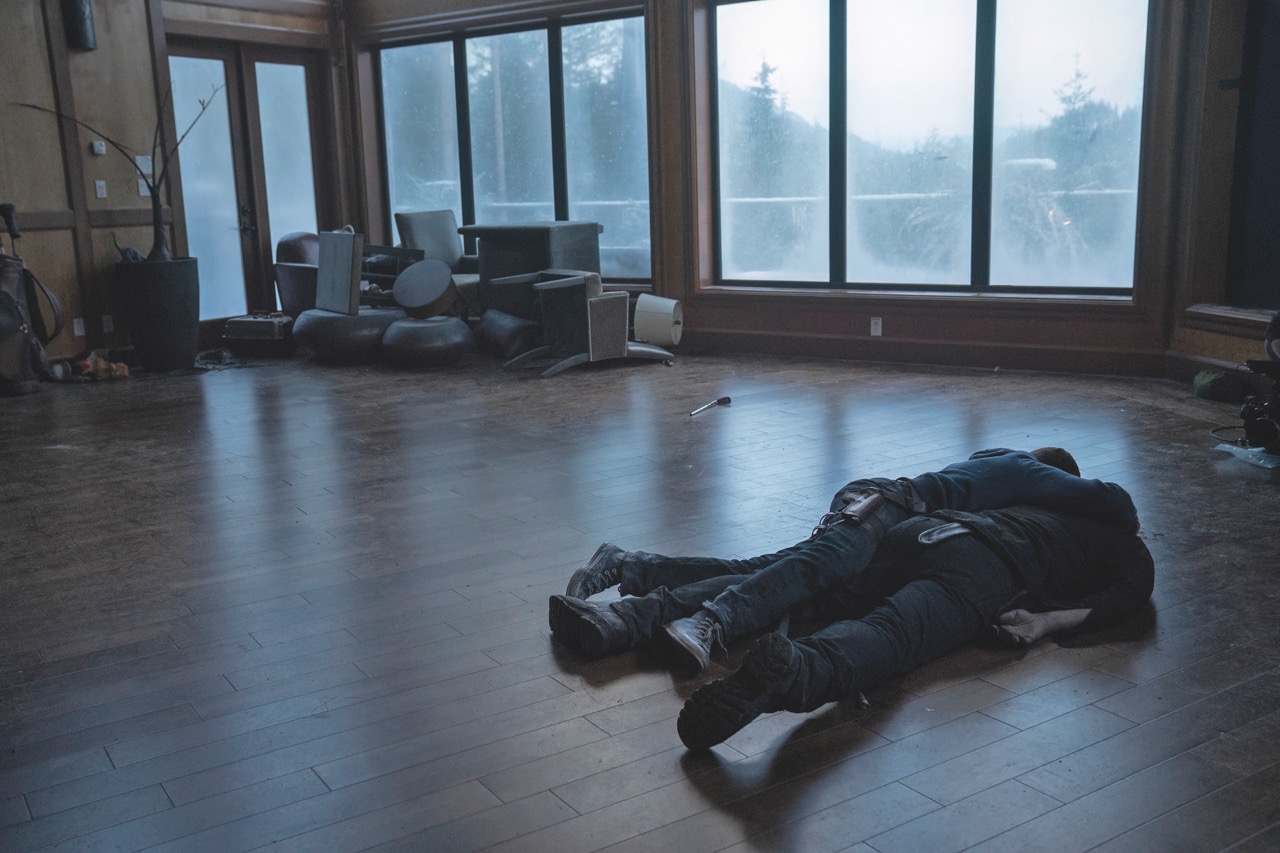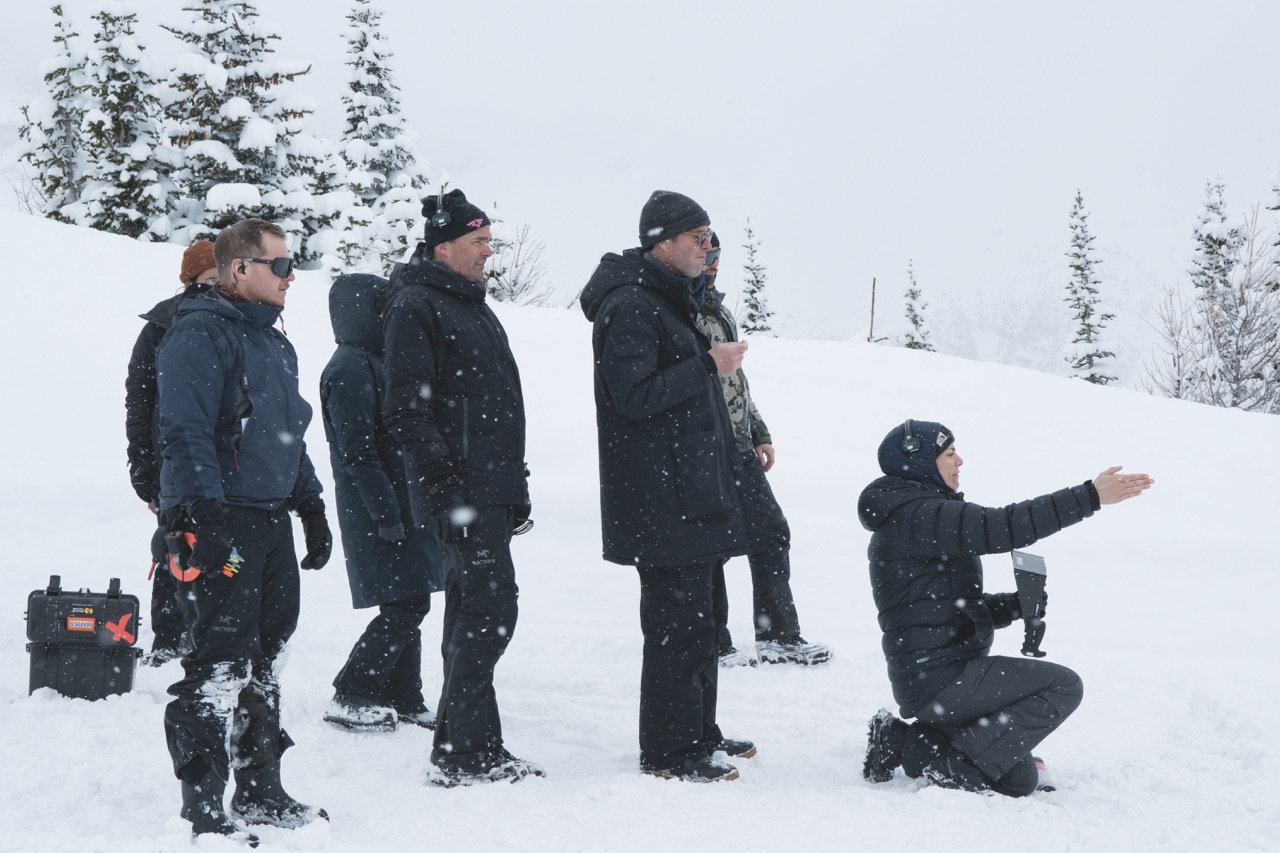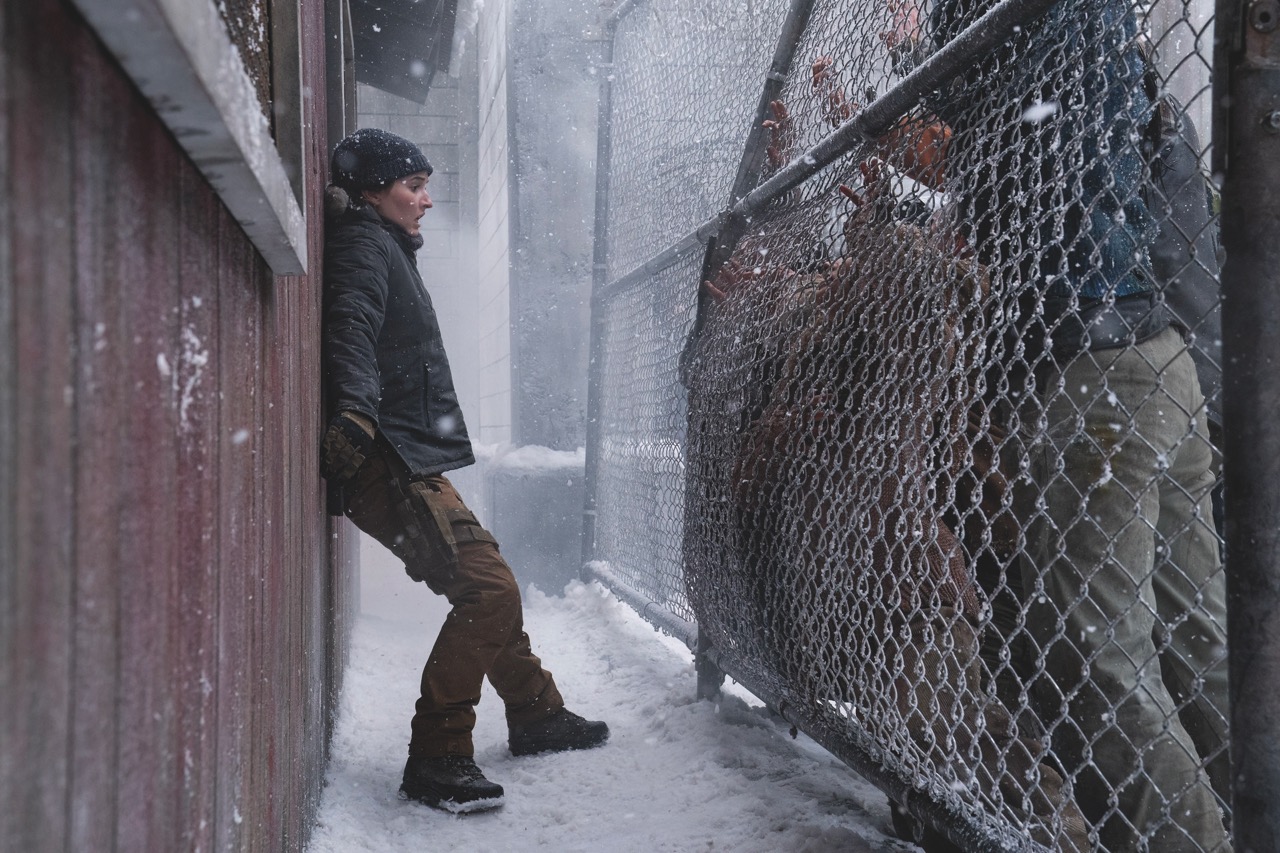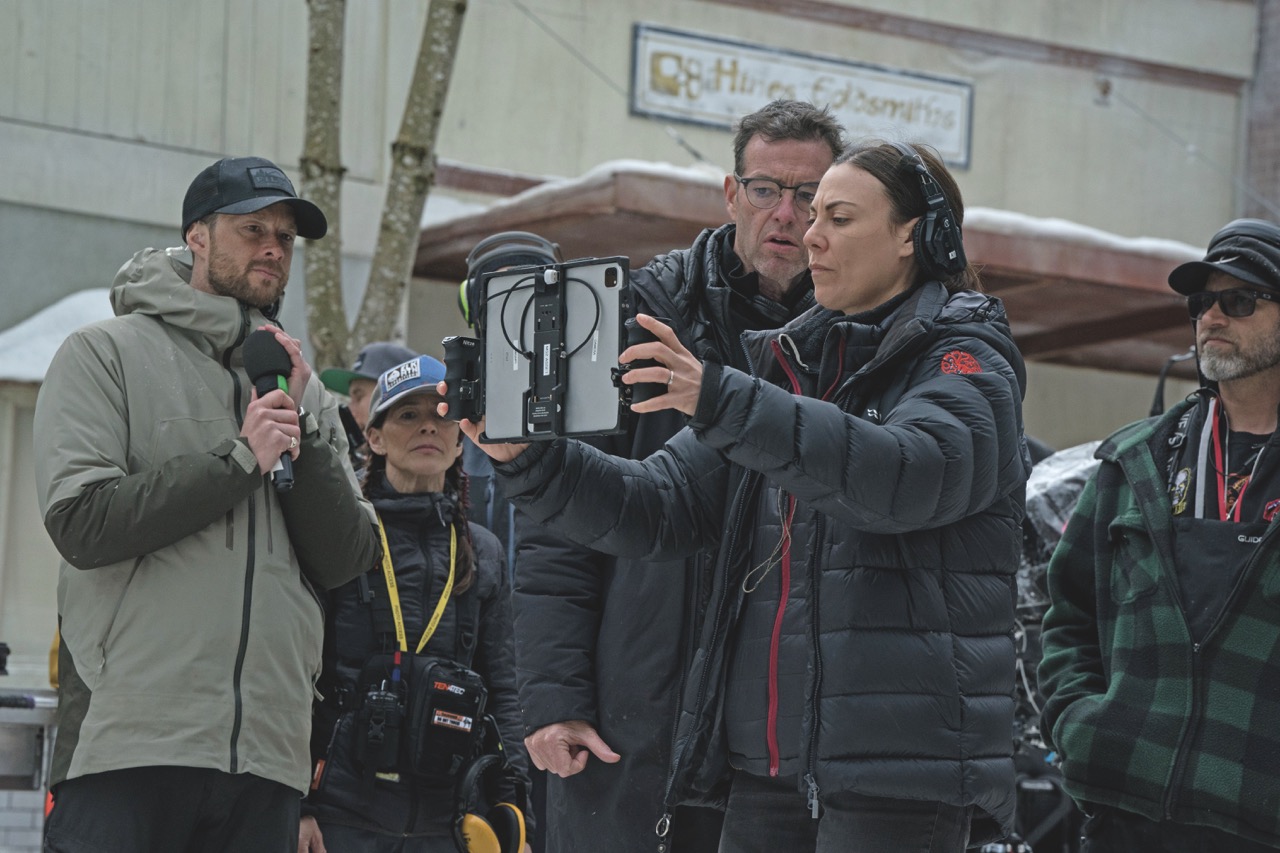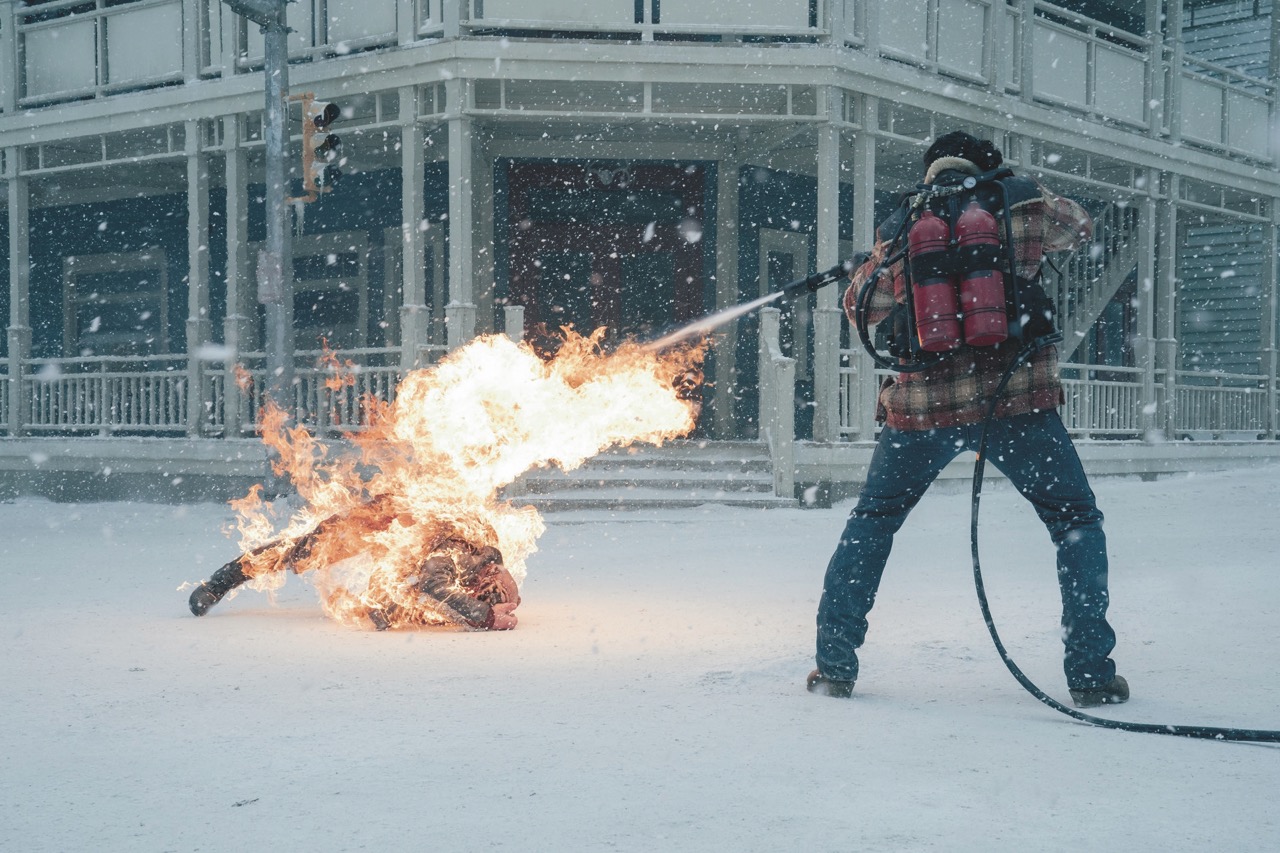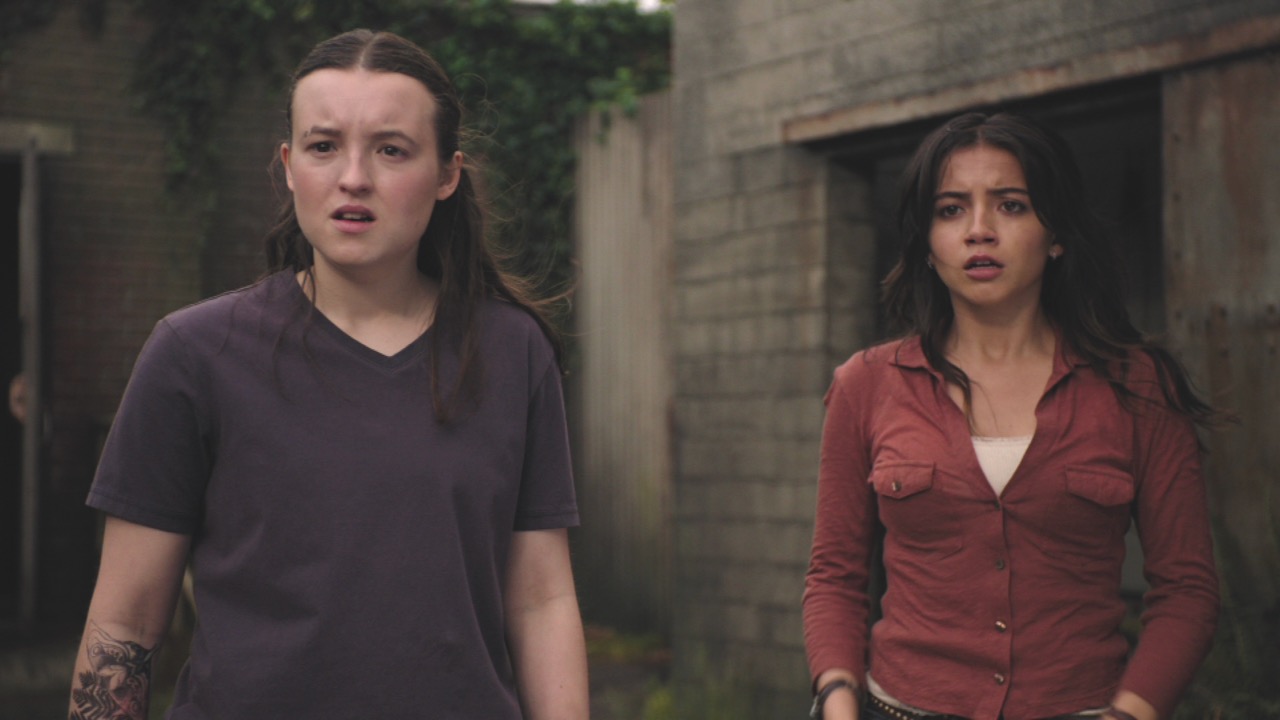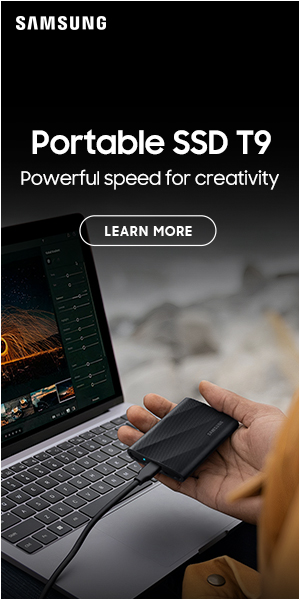
Production: The Last of Us
Posted on May 29, 2025 by Admin
“The story is grounded in the characters, in their humanity”
Season 2 of hit survivalist show The Last of Us ushers its main characters into a new era, with higher highs, lower lows and bigger stakes than ever. DOP Catherine Goldschmidt, ASC, BSC discusses her work on the series, highlighting Through the Valley – the episode that changes it all. Major spoilers ahead!
Words Katie Kasperson | Images HBO, BTS to HBO/Liane Hentscher
When Naughty Dog and Sony Computer Entertainment released The Last of Us back in 2013, it was quickly deemed a masterpiece of narrative game design. Played in the third person, the video game combines cinematic visuals with exceptional storytelling, linking survivalist horror with emotionally driven characters. Namely, we follow Joel, a contractor turned rough-around-the-edges smuggler, and Ellie, a feisty teenager who’s mysteriously immune to the infection that’s ravaged their world.
Ten years later, HBO released a television adaptation of the acclaimed game, starring Game of Thrones actors Pedro Pascal and Bella Ramsey as Joel and Ellie, respectively. The Last of Us faced a unique balancing act: raking in a new fanbase of non-game players while satisfying those familiar with the story. While Season 1 follows the events of the original game, Season 2 picks up with The Last of Us Part II, introducing new characters and, more importantly, greater threats.
Dead end
Unlike many adaptations, The Last of Us (television series) and The Last of Us (game series) are strikingly similar, not only in plot but also style. Some scenes are near-identical matches across the two media – but there were times when the crew decided to ditch the original IP for storytelling’s sake.
One scene that contains such a discrepancy is Joel’s death, which closes out episode 202, Through the Valley. This has come as quite a shock to many viewers – Joel is one of arguably two, maybe three main characters – but those who played the game knew to expect it. “Mark Mylod and I watched [the game] together,” says Catherine Goldschmidt, ASC, BSC, DOP on episodes 202 (which Mylod directed), 204 and 207. “In the game, when Joel dies, it’s a oner. Immediately, we thought, ‘we’re not going to do that’. That was an obvious one where we knew we would depart from how the game was shot.”
Joel is killed in a cabin, just a little outside Jackson – the city Ellie, Joel, his brother Tommy (Gabriel Luna) and their loved ones have spent years rebuilding. Abby (Kaitlyn Dever) – whose father died at the hands of Joel in Season 1 – violently takes his life, putting an end to her quest for revenge. Unfortunately, Ellie is forced to watch it all happen, and the audience sees the sequence largely through her eyes.
Goldschmidt, Mylod and the show’s creators Craig Mazin and Neil Druckmann landed on three cameras to capture the scene. While the audience knows what’s about to take place before Ellie arrives, “when she comes in, we are with her. We discover the scene with her,” explains Goldschmidt. “To keep the camera rooted in her perspective, we’re staying wider and closer with her and using a longer lens [to show] how she would be seeing Joel across the room.”
When Abby kills Joel, the camera doesn’t cut away; instead, it lingers while the audio distorts. A few seconds later, the camera is on Ellie before shifting to an aerial shot of her holding his body. “We knew people would need to take a breath, and that once Joel is dead and Ellie has crossed the room and gotten to him, that would be the moment to do it,” Goldschmidt states. “This practical location had these incredibly high ceilings, so I knew we could get an arm in there. That change in perspective lets the viewer come out of the scene and have this appreciation for just how alone Ellie is now.”
Cold as ice
Joel’s death, while devastating, isn’t the only major blow in episode 202. Through the Valley begins with a storm brewing, and while it’s used in part to foreshadow, it also pushes the plot. Abby goes out into the storm, slides down the mountainside and lands on a pile of infected (the name of the zombie-like creatures who host the lethal cordyceps fungus); this initiates a domino effect of unfortunate events, including an attack on Jackson itself.
Shot in the Rocky Mountains of Alberta, Canada, the snow-filled scenes required additional forethought. “We had to be technically prepared. All the tools we used were the same; the only difference was they all had to have snow tracks on the bottom,” recalls Goldschmidt. “There are also a few shots we included where the operators are stepping through the snow.”
Stepping is one thing; sliding is another. To capture Abby’s fall, the crew rigged a pair of sleds – one for Abby and her stunt double, and the other for the operator. “They were fighting over who would get to do that shot,” Goldschmidt laughs. “[The sleds] could either slide down in tandem, or we could let Kaitlyn get away from us. The next day, they reconfigured it so that they were on parallel tracks – so as she’s going down, the camera is going up. I’m very glad they did that option because it makes it much more visceral.”
After Abby discovers the infected, they chase her into a fenced area, and the fence itself starts to give way, crushing her under its weight. “That’s a great example of [the show being] like the game,” says Goldschmidt. “This is the claustrophobia we want; this is the intensity we want.” The Last of Us Part II introduced the ability for players to crawl, and “that’s why that scene was designed that way.”
To stay with Abby as she’s being pressed further underneath the fence, Goldschmidt used the DJI Ronin 4D – as opposed to the ALEXA 35, which is used throughout the show – on a telescopic arm. “We could take off the base and lie in the snow. We could pull with her, push with her, take her point of view.”
Action-packed
The infected are connected via what could be called a hive mind, and when Abby awakes one group, the rest come running too. Instead of attacking her, they pivot towards Jackson; as the infected approach, the city becomes a well-oiled machine, with dwellers either taking cover or bracing for a fight.
“The battle was a huge, VFX-heavy sequence,” begins Goldschmidt. “And with all VFX-heavy sequences, they are previsualised. The battle previsualisation was done even before Mark and I got started on the job, to get an idea of how much it would cost. Once we began, we watched the previsualisation, gave notes on it, went back to the storyboard and designed some shots that weren’t in there. It was an iterative, collaborative process,” she explains.
These Jackson battle scenes were filmed on a backlot rather than in the Rocky Mountains, giving the crew a little more control over blocking, lighting and other concerns. “With everything big, you just have to break it down into its component parts,” states Goldschmidt. “The rooftops are the perfect example. The rooftop action was all scripted, but it wasn’t clear what rooftop we would need to be on. We had to go and figure out the best geography for where the infected would come from, where we would be, where Tommy would be and how that would all work out.”
Shot over 24 days, episode 202 then involved an additional week of second unit photography, getting the shots that would later receive a hefty dose of VFX. Besides the mere chaos of a standard battle sequence, Through the Valley adds flamethrowers and other digital pyrotechnics, as well as a ‘bloater’ – a larger, stronger and more menacing creature than the regular infected (also known as a ‘boss’ in video game lingo). Tommy goes up against one and barely makes it out alive.
Yin and yang
The events of Through the Valley cause the series to change course, and Goldschmidt expected a strong reaction from audiences. “For the people who played the game, the question was: are we going to do it justice? For the people who didn’t play the game, it’s this shock. We knew what the original reaction had been to the game, and we knew people were upset. It felt safe to assume that was coming.”
In spite (or because) of the pressure to deliver, episode 202 is one of the series’ highest rated. “As soon as it was out and I started hearing from people, I felt a huge relief, like this weight had been lifted. We were all very nervous. Everybody felt that – even if they weren’t admitting it.”
But Goldschmidt’s work on the series didn’t stop there; she also served as DOP on episodes 4 and 7 – the Season 2 finale. “Episode 4 is mostly sets and at night – the total opposite set of visual parameters [from episode 2],” she adds. “That’s how I find my self-expression: figuring out the best way to present the lighting, atmosphere and these incredible spaces. In terms of where I should put the camera, it’s just what emotionally feels right to the characters and the story.”
Episode 204 is unique in other ways too, from creating effects in camera to centring on Ellie’s journey with Dina, her friend and romantic interest. “I found that really satisfying, to hone in on two people and their relationship, and how that changes over the course of the episode,” comments Goldschmidt. “I love it for all the reasons that it’s totally different from episode 2. There is a cool action scene, but there are some lighter scenes as well. That is why the show is great; it balances both light and dark.”
For Goldschmidt, the darkness and violence were an initial deterrent, and she questioned whether she was right for the job. “Part of the reason I don’t play video games is that I don’t like going around and shooting people,” she reveals, “but I think the reason why the show is so special is that the story is grounded in the characters, their humanity and putting them in these extreme situations.”
While hesitant at first, she revelled in the chance to shoot action sequences. “[They] are fun to handle because of challenges like: ‘How do we put the camera in this character’s perspective and crawl through the snow or run through a subway car?’ Whatever it is, it’s fun to solve those problems.”
A human-centred story at its core, The Last of Us allowed Goldschmidt to play with the interaction of action and emotion. “I definitely want my photography to serve the story. I’m not that interested in splashiness and for that reason The Last of Us is a good fit for me,” she admits. “It’s fun to work with all these people and wonder, ‘What’s this going to look like?’ You find these areas that are yours to design and to inform.” Thanks to Goldschmidt’s craft, Through the Valley – and the series as a whole – will certainly go down in TV history.
The Last of Us Season 2 is streaming now on Max in the US and Europe, and Sky or NOW in the UK
This story appears in the May/June 2025 issue of Definition


